Earthquakes occur when energy stored in elastically strained rocks is suddenly released. This release of energy causes intense ground shaking in the area near the source of the earthquake and sends waves of elastic energy, called seismic waves, throughout the Earth. Earthquakes can be generated by bomb blasts, volcanic eruptions, and sudden slippage along faults. Earthquakes are definitely a geologic hazard for those living in earthquake prone areas, but the seismic waves generated by earthquakes are invaluable for studying the interior of the Earth.
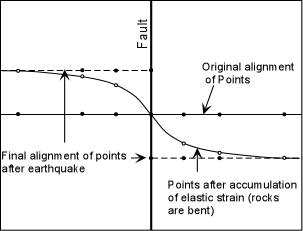
Most natural earthquakes are caused by sudden slippage along a fault zone. The elastic rebound theory suggests that if slippage along a fault is hindered such that elastic strain energy builds up in the deforming rocks on either side of the fault, when the slippage does occur, the energy released causes an earthquake. This theory was discovered by making measurements at a number of points across a fault. Prior to an earthquake it was noted that the rocks adjacent to the fault were bending. These bends disappeared after an earthquake suggesting that the energy stored in bending the rocks was suddenly released during the earthquake.
Seismology, The Study of Earthquakes
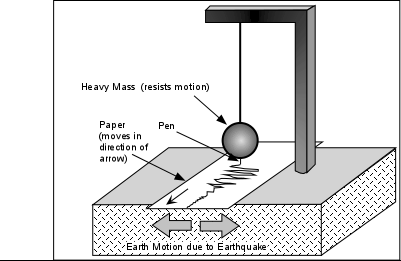
When an earthquake occurs, the elastic energy is released and sends out vibrations that travel throughout the Earth. These vibrations are called seismic waves. The study of how seismic waves behave in the Earth is called seismology.
This is accomplished by isolating the recording device (like a pen) from the rest of the Earth using the principal of inertia. For example, if the pen is attached to a large mass suspended by a spring, the spring and the large mass move less than the paper which is attached to the Earth, and on which the record of the vibrations is made.
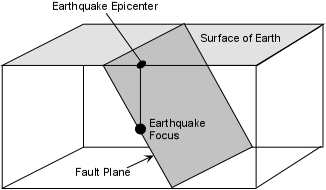
Seismic Waves (freeware simulation 3.39Megs). The source of an earthquake is called the focus, which is an exact location within the Earth were seismic waves are generated by sudden release of stored elastic energy. The epicenter is the point on the surface of the Earth directly above the focus. Sometimes the media get these two terms confused. Seismic waves emanating from the focus can travel in several ways, and thus there are several different kinds of seismic waves.
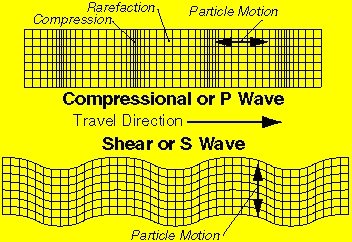
- P - waves - are Primary waves. They travel with a velocity that depends on the elastic properties of the rock through which they travel.
- S-waves travel through material by shearing it or changing its shape in the direction perpendicular to the direction of travel. The resistance to shearing of a material is the property called the rigidity. It is notable that liquids have no rigidity, so that the velocity of an S-wave is zero in a liquid. (This point will become important later). Note that S-waves travel slower than P-waves, so they will reach a seismograph after the P-wave.
- Surface Waves - Surface waves differ from body waves in that they do not travel through the Earth, but instead travel along paths nearly parallel to the surface of the Earth. Surface waves behave like S-waves in that they cause up and down and side to side movement as they pass, but they travel slower than S-waves and do not travel through the body of the Earth.
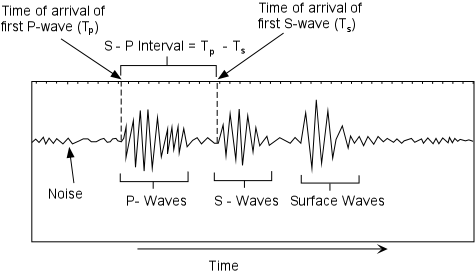
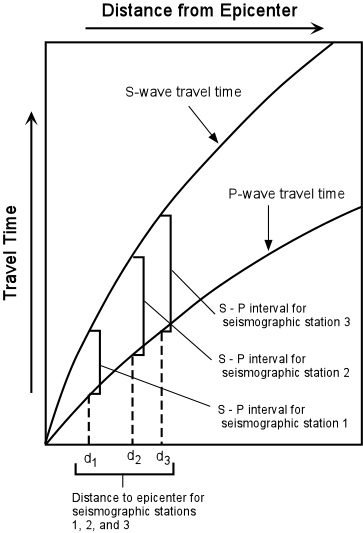
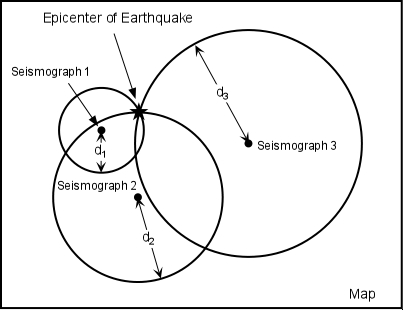
Three such circles will intersect in a point that locates the epicenter of the earthquake.



No comments:
Post a Comment